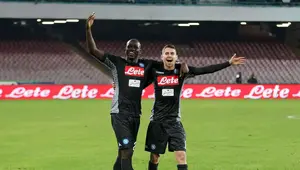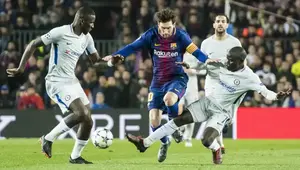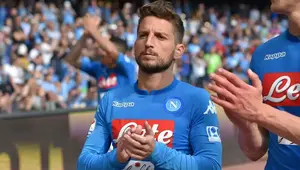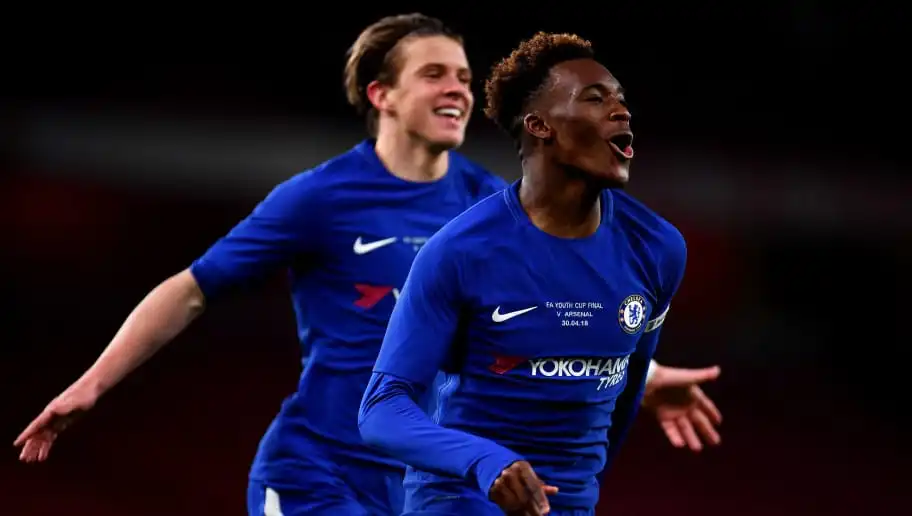With Maurizio Sarri seemingly set to replace Antonio Conte as manager of Chelsea, questions are being asked of what Sarri could bring to the team and how his tactics would translate to the club.
Sarri will be faced with many tough tasks as Chelsea manager. Immediate success is almost always demanded by Chelsea, but long-term sustainability is becoming more important at Stamford Bridge too.
Negotiations for Sarri have been drawn out over months and Chelsea must believe that Sarri is the man to achieve their goals. So how exactly will Sarri's tactics work at Chelsea?
1. 'Sarriball'

'Sarriball' or 'Sarrismo' are two names given to Sarri's preferred tactics. Described by French outlet L'Equipe as "vertical tika-taka", Sarri likes his team to focus on possession, using short passes to advance up the pitch as quickly as possible.
There are a few positions which play a key role in 'Sarriball'. Central defenders need to be strong passers who can initiate attacks. A deep-lying midfielder is responsible for picking the ball up from the defenders and instantly turning the possession into offence.
His attackers must be fluid and prepared to move around and draw defenders out of position to create space for others.
On paper, this tactic has potential in England. Guardiola's Manchester City and Klopp's Liverpool have highlighted how both possession and attacking fluidity can dominate in the Premier League, and 'Sarriball' should be no different.
2. Does Sarri Have the Players at Chelsea?

The first key position for Sarri is his central defenders, who must be calm and strong passers of the ball. At Chelsea, the likes of Andreas Christensen and Antonio Rudiger have both shown that they possess these qualities, whilst David Luiz and even Gary Cahill have both shown their competence with the ball at times. Links to Daniele Rugani of Juventus are unsurprising.
In terms of the deep-lying midfielder, Cesc Fabregas is the most suited candidate for the role, although with Napoli's Jorginho reportedly following Sarri to Chelsea, it appears as though the midfield is sorted.
His two other midfielders have strict roles. The first is required to have a box-to-box engine and is capable of moving forward, but primarily focusing on regaining possession, which suits N'Golo Kanté perfectly. The second must be creative and willing to drive forward, meaning the likes of Ruben Loftus-Cheek or Ross Barkley would have the opportunity to thrive.
Sarri focused his attack on the left wing at Napoli with Lorenzo Insigne, and Eden Hazard is almost the perfect candidate to take the role. He can create chances with his pace, dribbling and movement and will suit Sarri's tactics.
His striker must be fluid and able to move around to create space for his teammates. Alvaro Morata, Michy Batshuayi and Olivier Giroud don't appear to fit this role, which is the only gap in Sarri's potential tactics.
3. What Signings Does He Need to Make?

Rather than focus on signings, Sarri's primary goals should be to keep the majority of the squad together. Thibaut Courtois, N'Golo Kanté and Eden Hazard have all been linked with departures, and would need replacing if they do leave.
Jorginho is perfect for a midfield role, but Fabregas would be a solid alternative if Jorginho does not arrive at Chelsea. Should Sarri be able to keep the squad together, the only glaring hole in his tactics is in attack.
Dries Mertens was crucial to Napoli's performances, and Chelsea's current strikers are of a different ilk. Sarri will either be required to mould Morata or Batshuayi into his perfect striker, or search the transfer market for a replacement. Morata and Batshuayi are both agile and opportunistic strikers who could suit Sarri's tactics, but that remains to be seen.
4. Where Do the Young Players Fit in?

Sarri comes with a questionable reputation of playing youth players. At Empoli, over ten key members of his squad were under 22 years old, so he clearly has no issue with playing young players if they are good enough.
However, his lack of rotation came under fire at Napoli as his squad burned out towards the end of the season. Youth players were barely given any game time, although Napoli's youth set-up is nowhere near the level of Chelsea's.
Chelsea have long been regarded as one of the better youth teams in Europe, and the calibre of players in their academy is much higher than Napoli's. What is clear from his days in Napoli is that if a player is good enough, they are old enough. This thought process may prove key in the development of Chelsea's talented youngsters.